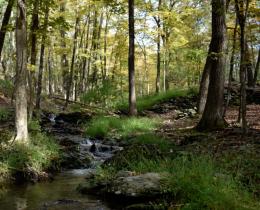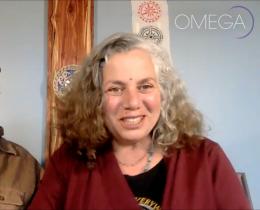Due to our innate connection with nature, mindful birdwatching is undoubtedly a tonic and a source of peace for our modern hearts and minds. For our ancestors, however, having an in-depth awareness and understanding of birds and nature was vital because it informed them of the happenings in the wilderness.
This appreciation of what is often called “bird language” is still part of the culture of many native communities, such as the San Bushmen of the Kalahari Desert and some Amazon rainforest communities. In our modern lives, however, most of us don’t need to read the language of our winged companions to survive—but we can still gain great pleasure and insights from tuning in to their conversations.
What Is “Bird Language?”
Bird language is their expression of what they’re experiencing. Have you ever seen a robin lifting its tail up and down when he becomes threatened and agitated because of a competing male invading his territory? Or perhaps delighted at the sight of a relaxed song thrush broadcasting his spring tune from the treetops with confident exultation?
Put simply, birds talk. They discuss everything and everyone. They talk to each other. They talk to potential and existing partners. They discuss territories, predators, and other animals, using a combination of calls, songs, and body language. Bird language is the communication within and between species that birds use to stay in contact with the flock, find partners, protect their territories, and stay aware while they go about their daily business.
A pair of young song sparrows will email short “companion calls” to check they’re both still nearby and out of danger. Great tits will inform their flock that an owl or sparrow hawk is nearby or hunting overhead by alarm calling. While in Mexico, I once witnessed a mixed-species flock of tanagers, flycatchers, hummingbirds, and warblers calling loudly as a large snake moved through the leaf litter below them.
Bird language isn’t only of value to the birds themselves but also to other creatures, such as deer and rabbits, which listen out for bird alarm calls as an early warning of potential danger.
Why Should We Listen?
Understanding bird language is part of a mindful birdwatching journey because it requires mindful listening and mindful seeing so that we can pick up on the difference between birdcalls, songs, and behaviors. But tuning into bird language is also a way for us to discover what’s happening around us when we are out in nature, such as whether other animals are present. In response to an owl sleeping against a tree trunk or a deer walking by, birds modify their behaviors and vocalizations. As we detect these changes in bird activity, we can discover what other creatures may be in the vicinity. In this light, a better understanding of bird language can enable us to experience more encounters with wildlife, including birds.
People who have studied bird language also report that it can enhance aspects of their modern lives—including their perception of human relationships, their creativity, and their sense of interdependence with the world. At a time when we urgently need to restore our connection with our sensory experience and with the natural world around us, understanding bird language is beneficial to us all. You can help us nurture a wiser relationship with nature. No expertise is required—simply mindful awareness and experience. Start by finding yourself a “Sit Spot.”
Mindfulness Exercise: Find Your Sit Spot
My granddad used to tell me that if you want to get up-close and personal with birds, you must sit and remain still for at least 20 minutes. After that time, the birds you spooked on your arrival into their “personal space” would begin to relax and return. I later discovered the Sit Spot exercise on a nature-awareness course I attended, and my granddad, like so many times before, turned out to be right.
The Sit Spot is a lovely exercise you can practice regularly to enhance your experience when you’re in nature—paying full attention to your senses, watching, and listening to birds around you. In this case, the best place to sit may be in the heart of a forest, by a stream somewhere with a natural view devoid of obvious signs of human presence. You can do this wherever you are. As your senses get more and more accustomed to the natural world, you will begin to discover things you had never noticed before.
- Walk mindfully. Take a deep breath. Set an intention to let go of any other concerns and engage your senses. Don't hunt. Let your senses drift across the landscape. Walk without a goal. You aren't trying to spot things. You're simply opening up your awareness. Keep your head up and try not to lean forward. Take shorter steps. Glide quietly, and look at everything. When you find a spot you like, sit or lie down and become still and quiet.
- Watch mindfully. Pick a point to focus ahead. Notice what you see. While staring at that point, notice what you see in your peripheral vision. Turn your head, pick another point to focus on and reengage your peripheral vision.
- Listen mindfully. Notice sounds. Notice the silence between sounds. Listen to the furthest sound you can hear.
- Touch mindfully. Notice what you can feel. Is the ground cold? What can you feel on your skin?
- Participate. Notice how you’re feeling—what energy are you bringing to the place? Cultivate an attitude of belonging and participation, instead of merely being an observer.
- Practice! Visit your Sit Spot daily, ideally for 20-40 minutes, if you can.



